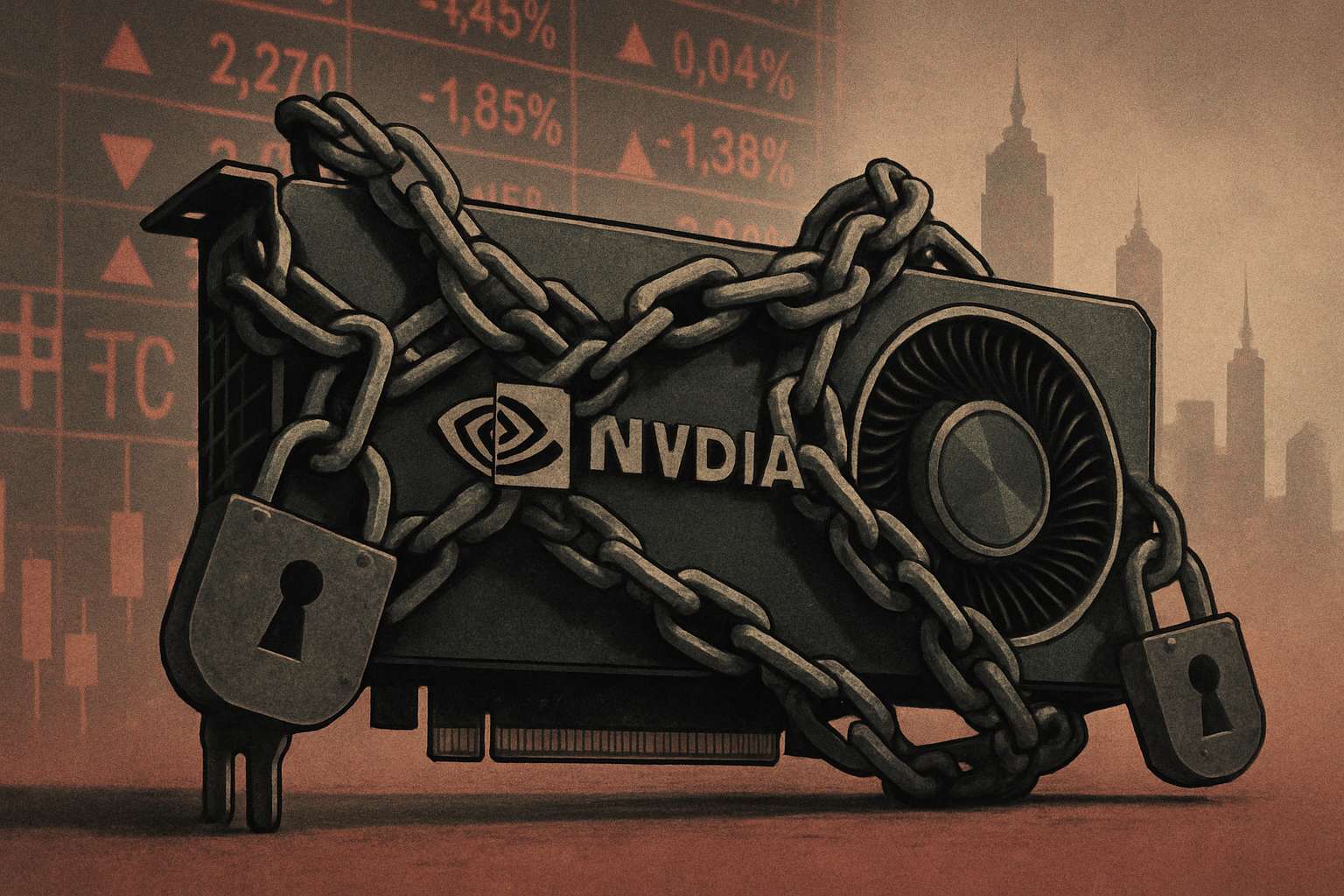
AI CERTs
14 hours ago
AI Market Restrictions Slash Nvidia’s China GPU Dominance
Global technology supply chains shifted dramatically in April 2025. Consequently, the United States widened AI Market Restrictions, forcing Nvidia to seek a Bureau of Industry and Security license before exporting H20-class GPUs to China. Moreover, the action instantly froze shipments worth billions, stunning investors and policymakers alike. Meanwhile, Chinese cloud giants scrambled for substitute hardware as domestic chipmakers hurried development. In contrast, Washington framed the move as a security necessity that slows military AI advances.
Control Rules Expand
January 2025 saw Commerce release the “AI Diffusion” interim rule. Furthermore, the update broadened ECCN thresholds covering memory, interconnect, and even model weights. Subsequently, the April notice told Nvidia every H20 sale now needed case-by-case approval. Therefore, orders bound for Hong Kong, Macau, and mainland China stalled immediately.

Undersecretary Jeffrey Kessler later testified Huawei could produce fewer than 200,000 advanced chips during 2025. Consequently, officials argued controls bought strategic time. Nevertheless, industry lawyers warned enforcement complexity invited diversion through third countries.
These developments tightened export pathways and heightened compliance risk. However, stronger rules also magnified corporate exposure to sudden license shifts.
Export parameters clarified, the narrative next turns toward Nvidia’s bottom line.
Nvidia’s Financial Hit
Nvidia disclosed a potential US$5.5 billion charge linked to stranded H20 inventory and purchase commitments. Additionally, China previously contributed about US$17 billion, or 13 percent of annual revenue. Consequently, CEO Jensen Huang told Computex attendees the firm’s China data-center GPU share plunged from almost 95 percent to nearly 50 percent.
Market researchers echoed those losses, noting rapid switches to Huawei Ascend and Cambricon alternatives. Moreover, canceled orders reduced quarterly sales momentum, raising investor anxiety despite record demand elsewhere. Nevertheless, limited licenses began resurfacing by mid-2025 under controversial terms.
- US$5.5 billion inventory charge
- ≈13 percent revenue from China before curbs
- 50 percent estimated current share
- 200,000 maximum Huawei Ascend output
Financial shocks underscored how AI Market Restrictions reshape earnings forecasts. Consequently, shareholders demanded clarity on future license availability.
Monetary damage assessed, attention shifts to shifting customer demand within China.
China Market Shifts
Tencent, Alibaba, and ByteDance urgently evaluated substitute accelerators. Meanwhile, domestic fabs gained generous state subsidies to raise yields. In contrast, Singapore billing channels emerged, attempting to route compliant deliveries through third-party hubs. However, BIS emphasized diversion penalties, discouraging indirect shipments.
Analysts at ITIF warned broad curbs may accelerate indigenous innovation, eroding U.S. technological leverage. Furthermore, falling Nvidia share opens room for AMD and local vendors pursuing lower-tier exemptions.
These demand adjustments illuminate wider geopolitical AI impacts. Nevertheless, regulatory finance provisions sparked even fiercer debate.
Commercial realignment established, the next section unpacks the contentious revenue mechanism.
Controversial Revenue Share
August 2025 press reports surfaced about a 15 percent revenue transfer from licensed China chip sales to the U.S. Treasury. Moreover, both Nvidia and AMD allegedly accepted the condition to regain limited H20 and MI308 access. However, constitutional scholars labeled the plan an undeclared export tax lacking Congressional approval.
Lawmakers across parties demanded transparency from Commerce. Additionally, no Federal Register notice had appeared, leaving legal status uncertain. Consequently, corporate compliance officers tracking export regulation voiced confusion about enforceability.
These questions spotlight governance gaps and possible judicial challenges. Therefore, executives await formal rulemaking before committing long-term supply contracts.
Policy controversy outlined, the following section explores strategic arguments for and against strict rules.
Strategic Policy Debate
National-security advocates cite potential military supercomputing as justification. Furthermore, they argue that slowing advanced chip inflows hampers People’s Liberation Army AI modernization. In contrast, industry groups counter that sweeping AI Market Restrictions shrink U.S. research budgets by cutting offshore revenue.
ITIF’s May 2025 brief claimed excessive controls "chip away" at American competitiveness. Moreover, analysts called the 15 percent fee "probably unconstitutional," highlighting significant geopolitical AI impacts on allied supply chains.
Both camps present defensible positions. Nevertheless, leaders must balance security with economic vitality.
Debate assessed, global repercussions become evident next.
Global Industry Outlook
European cloud firms watch closely, fearing precedent for regional restrictions. Additionally, Japanese toolmakers worry demand volatility may disrupt utilization rates. Consequently, semiconductor capital-equipment suppliers diversify client portfolios beyond mainland installations.
Meanwhile, Chinese venture capital increasingly funds chip design startups. Moreover, Beijing accelerates "Open Gauss" software ecosystems to reduce reliance on CUDA libraries. Therefore, long-term competitive maps grow less U.S.-centric.
International trends affirm that geopolitical AI impacts reverberate across every tier. However, proactive compliance skills now carry premium value for professionals.
Industry trajectory examined, the concluding section outlines practical steps for practitioners.
Compliance Steps Forward
Trade teams should monitor ECCN revisions weekly. Additionally, firms must document end-user screening to mitigate diversion allegations. Moreover, scenario planning around sudden license revocation protects inventory.
Professionals can validate expertise through the AI + Policy Maker Certification. Consequently, credentialed staff navigate export regulation with confidence while understanding emerging AI Market Restrictions.
Adopting these measures reduces operational risk. Therefore, organizations remain agile amid evolving guidelines.
Practical guidance provided, final thoughts follow.
Conclusion And Action
Recent U.S. actions redraw competitive lines. Furthermore, AI Market Restrictions continue altering Nvidia’s China prospects, shaping global innovation flows. Nevertheless, limited licenses and potential legal pushback keep outcomes fluid.
Staying informed about export regulation and tracking geopolitical AI impacts now determines strategic success. Therefore, readers should pursue continuous policy education and secure the AI + Policy Maker credential.
Advance your compliance knowledge today. Consequently, position your organization for resilience in tomorrow’s regulated AI landscape.



